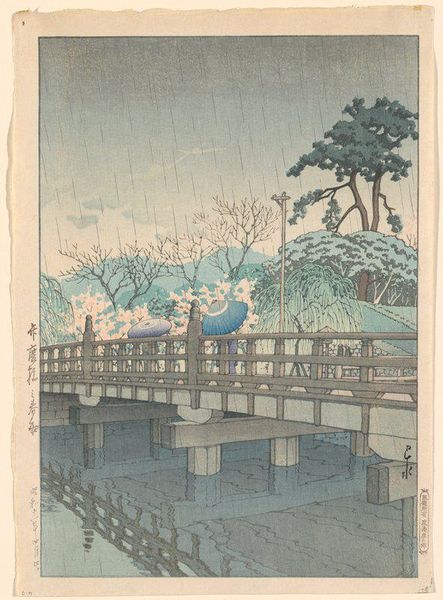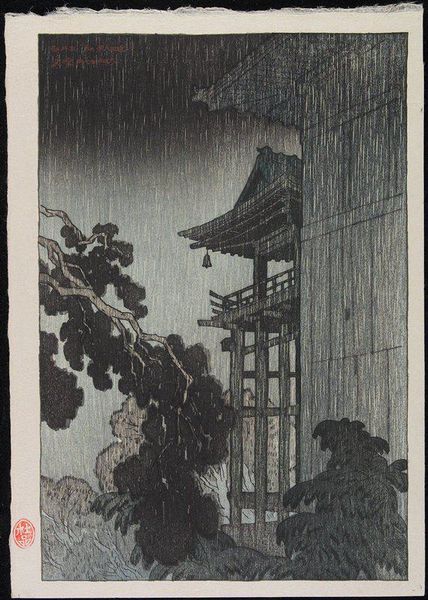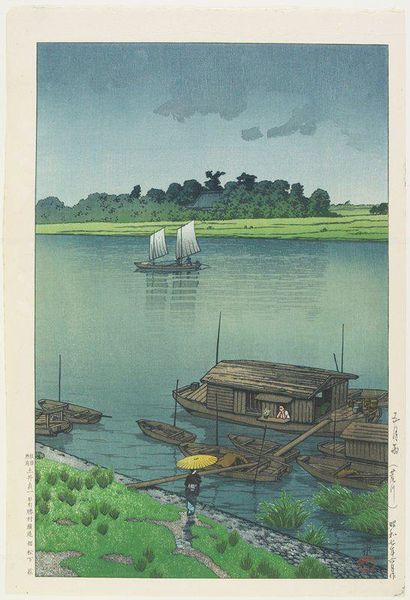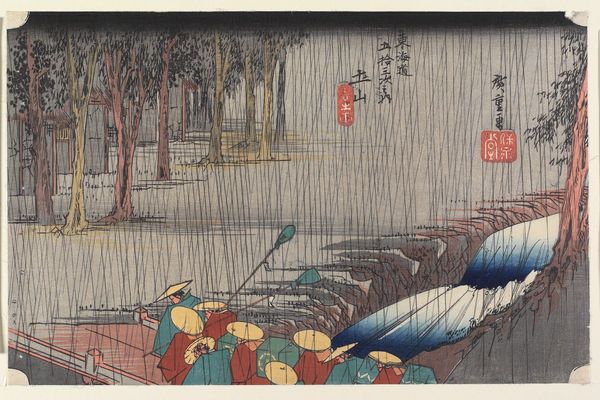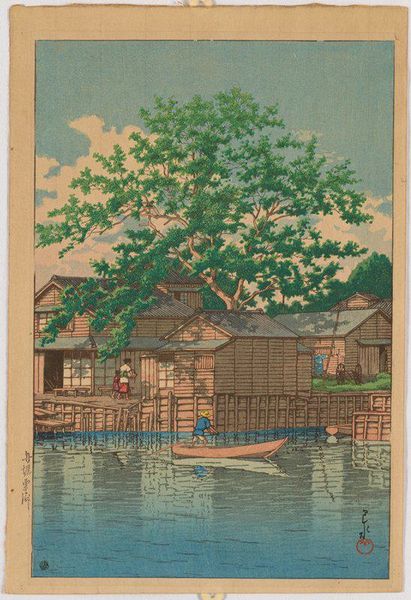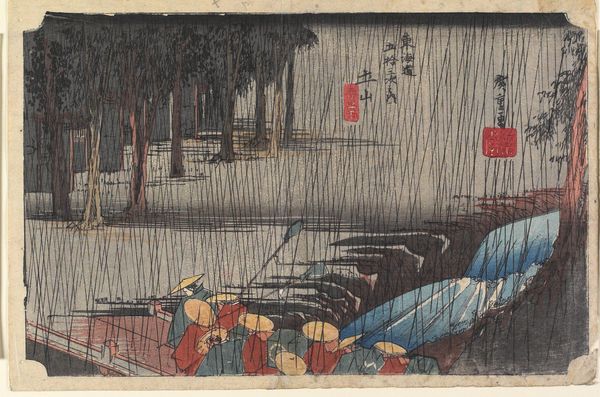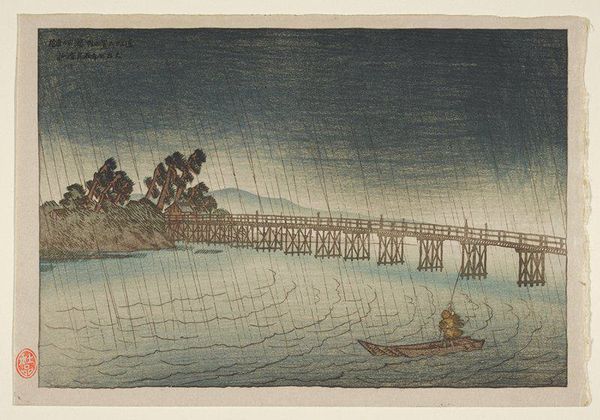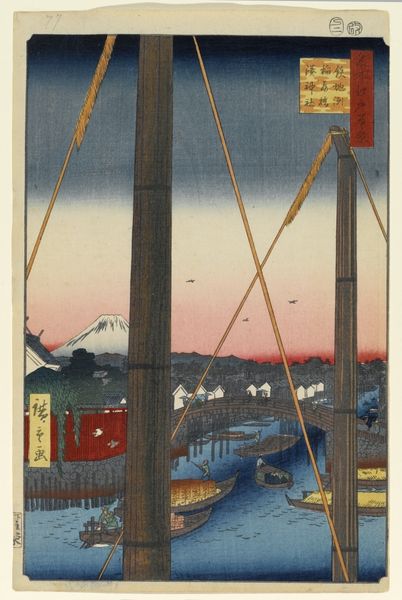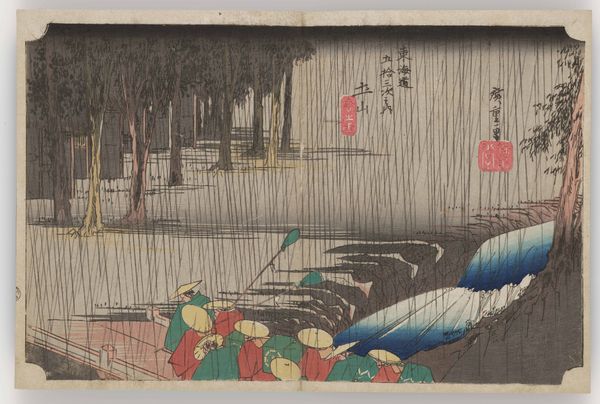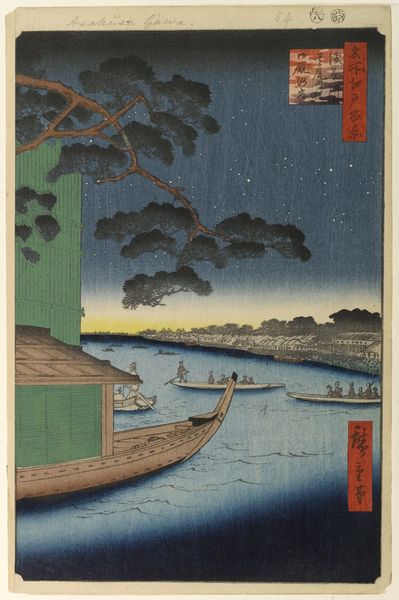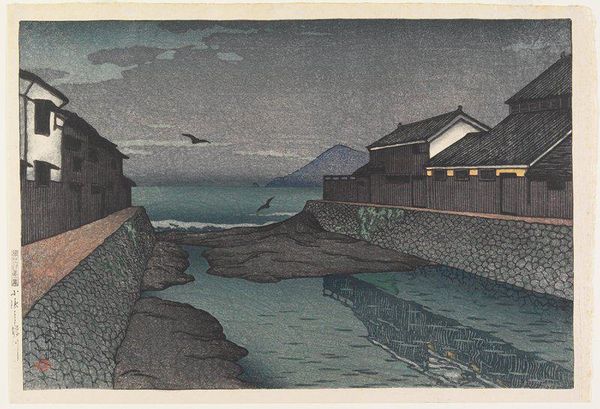
Dimensions: 14 7/8 × 10 9/16 in. (37.8 × 26.8 cm) (image)23 × 19 × 1 1/2 in. (58.42 × 48.26 × 3.81 cm) (outer frame)
Copyright: No Copyright - United States
Editor: Here we have "Ushibori Moat in Rain," a woodblock print by Hasui Kawase from the 1930s. The way the rain is depicted gives the whole scene a tranquil feeling, but also kind of makes me wonder about daily life. What story do you think the materiality of the woodblock tells here? Curator: Well, consider the implications of woodblock printing in the early 20th century. It's a process deeply tied to both artistic expression and commercial distribution. This isn't a unique painting; it’s inherently reproducible. How does this affect its value, its reach, its very meaning? Editor: So, are you saying the act of creating multiple prints democratizes art, or maybe cheapens it? Curator: It complicates it. Woodblock printing, like photography emerging around the same time in Europe, opened access, which meant it became more widely affordable, while its reliance on craft created a direct connection to labor and manufacturing. The materials themselves—the wood, the ink, the paper—and the skills involved speak volumes. Think about who controlled those means of production. Editor: That makes me see the scene differently. I was focusing on the rain and boats, but thinking about the process adds a whole other layer about labor, like the lumber by the building... Is that also meant to bring that to the foreground, to question who does that type of work and where does the final work end up? Curator: Precisely! The image and production invite questions of value. How does the value of labor tie into consumption, into who can buy art? It reminds us that art, at its most elemental level, is something *made*, utilizing raw materials in ways that are imbued with socio-economic relationships. Editor: I see what you mean. Thinking about the woodblock process changes how I understand the print's message and role within its society. Curator: Indeed. This isn't just a pretty picture; it's a window onto a whole system of creation, labor, and exchange.
Comments
minneapolisinstituteofart almost 2 years ago
⋮
On back: red seal 参百五拾枚限絶版、第九十二號 {sanbyakugojū mai kagiri zeppan, dai kyūjūni gō} (edition of 350, no. 92); stamp: MADE IN JAPAN. Second edition, published by Kawaguchi alone in the 1930s.
Join the conversation
Join millions of artists and users on Artera today and experience the ultimate creative platform.

